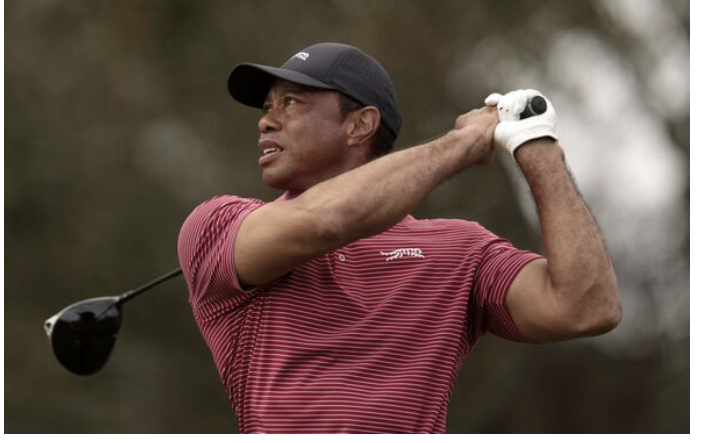Brooks Koepka’s LIV Golf winning ratio is awesome, but is it Tiger Woods’ kind of awesome?

Originally
In the ever-evolving world of professional golf, comparisons between players across different eras and tours are inevitable. The recent resurgence of Brooks Koepka, marked by his victory at the LIV Golf Greenbrier, has reignited debates over his place in the pantheon of golfing greats.
This win, his fifth in 31 LIV Golf events (a win rate of 16.13%), has prompted comparisons to none other than Tiger Woods, whose legendary career boasts an astounding 22% win rate on the PGA Tour. While both athletes have had stellar careers, the context and significance of their achievements differ, and understanding these nuances is crucial in appreciating their respective legacies.
Brooks Koepka’s LIV Golf Milestone vs. Tiger Woods’ PGA Tour Dominance
His five victories in the LIV Golf series, a relatively small sample size of 31 events, translate to a 16% win rate—an impressive feat by any standard. However, when placed side by side with Tiger Woods’ career statistics, the gap in their achievements becomes evident.
Tiger Woods, arguably the greatest golfer of all time, has redefined the sport with his unparalleled success on the PGA Tour. His 82 career PGA Tour victories, tied with Sam Snead for the most all-time, came across 374 events, giving him a win rate of 22%.
This percentage might seem modest at first glance, but the consistency and dominance it represents over a much larger span of time are what make Woods’ career so extraordinary.
Brooks Koepka’s recent achievements in LIV Golf have undoubtedly placed him among the top players in this new and growing tour. However, the numbers and context surrounding Tiger Woods’ career provide a different perspective on what it means to dominate a sport.
Woods turned professional in 1996 and quickly ascended to the top, winning his first PGA Tour event that same year. Over the course of his career, Woods has spent a record 683 weeks as the world’s number one player, made 338 cuts out of 374 PGA Tour events, and secured 108 worldwide victories.
In contrast, Brooks Koepka’s success has been more sporadic. While his five LIV Golf wins are noteworthy, they pale in comparison to Woods’ sustained excellence over nearly three decades. The PGA Tour, with its longer history, deeper fields, and more established competitions, provides a different level of competition. This makes Woods’ achievements not only a matter of quantity but also of quality.
Brooks Koepka’s achievements in LIV Golf reflect the changing dynamics of professional golf. The LIV Golf series, backed by significant financial investments, has attracted some of the sport’s top talents and has become a legitimate competitor to the PGA Tour. Koepka’s victories in this arena showcase his adaptability and determination to succeed, regardless of the platform.
However, it’s essential to recognize that the LIV Golf series is still in its infancy. The level of competition, while growing, has yet to reach the depth and history of the PGA Tour. This context is critical when comparing Koepka’s accomplishments to those of Tiger Woods.
While Brooks Koepka’s 16% win rate in LIV Golf is commendable, it comes in a tour with fewer events and a less established competitive field than the PGA Tour.
Tiger Woods: The Pinnacle of Golfing Excellence
Tiger Woods’ legacy in golf is cemented not just by his win rate but by the sheer magnitude and consistency of his achievements. From his 15 major championships to his 11 PGA Tour Player of the Year awards, Woods has set a standard that few, if any, can match.
His dominance in the early 2000s, where he won nine tournaments in 2000 alone, including the U.S. Open by a record 15 strokes, remains one of the most remarkable feats in sports history.
Tiger Woods’ ability to maintain such a high level of performance over two decades, despite numerous injuries and personal challenges, further elevates his status. His 82 PGA Tour victories include multiple wins at the most prestigious tournaments, such as the Masters, the U.S. Open, and The Open Championship.
His impact on the game extends beyond the numbers, as he has inspired a generation of golfers and brought unprecedented attention and growth to the sport.
On the other hand, Brooks Koepka’s success in LIV Golf, while impressive, comes in a different context. LIV Golf is still building its reputation and competitive field. The structure of the series, with its fewer events and different formats, means that win rates can be influenced by a variety of factors not present in the traditional PGA Tour setup. This makes Koepka’s achievements significant, but not directly comparable to Woods’ record.
Brooks Koepka’s recent success in LIV Golf is a testament to his skill and competitiveness. His five victories in 31 events mark him as one of the top players in this emerging tour, and his ability to win in different environments is commendable.
However, when compared to the career of Tiger Woods, Koepka’s achievements, while notable, highlight the unparalleled success that Woods has enjoyed throughout his career.
Tiger Woods’ career win rate of 22% on the PGA Tour, his 82 victories, 15 major championships, and numerous other records set a benchmark that remains unmatched in the history of golf. While Brooks Koepka continues to build his legacy, Woods’ impact on the game, both statistically and culturally, is likely to remain the gold standard for generations to come.
In the end, both golfers exemplify the highest levels of the sport, but Woods’ career stands as a monumental achievement that defines what it means to be the greatest in golf. Brooks Koepka’s rise in LIV Golf is a story of a modern-day champion, but Woods’ legacy is the tale of a legend.
ick Faldo launched a new broadside against LIV Golf, questioning not only its relevance but also its ability to attract and retain the public’s attention. In Nick Faldo’s words, LIV Golf failed to move the needle in terms of viewership, a fact that he believes underscores the league’s decline compared to other forms of entertainment. The implications of these statements are significant, as they reflect a growing divide in the world of professional golf, where loyalties and economic interests are increasingly at stake. Nick Faldo reiterated his position about the Saudi-backed league, saying it should refrain from engaging with the established tours: “I think they [LIV] are an island and go and do their own thing. That’s absolutely fine with me, go and play their tour. And I think we are now seeing that, wow, they’ve had three seasons, and they haven’t made much impact on the [viewing] numbers. Quite amusingly, pickleball was bigger than their two stars [Brooks Koepka and Jon Rahm] in a play-off”. Faldo’s position is that the alternative circuit is not beneficial to the sport of golf. He believes that it has caused a rift within the golf community, with players who have joined the league and those who remain loyal to the PGA Tour and DP World Tour. While his stance is controversial, it reflects a deep concern for the future of golf as a globally unified sport. Social Media Reaction to Nick Faldo’s words Nick Faldo’s views have generated significant engagement on social media, with a range of reactions to his comments. Since his statements were made public, the golf community on platforms such as X (formerly Twitter) has demonstrated a combination of support and disagreement with his stance. A tweet highlighting Faldo’s comments on Bunkered Golf’s X account generated a variety of responses. One user, Dave_Sn5 @sportsinfive, commented: “I’m guessing Faldo wouldn’t call Rahm a liar to his face lmfao”, This was in reference to Jon Rahm’s recent statements that he is happy at LIV Golf. Andrew Kirby @AndrewKirbyGolf made a wry reference to “Sir Nick doubles down, Sheesh give it a rest. At his prime Nick wanted to play less and focus on majors He loves and needs $ He would have been on LIV in a jiffy”. Nick Faldo and His Relationship with LIV Golf Nick Faldo has a history of controversial situations within the golf industry, particularly those related to LIV Golf. Since the league’s inception, Faldo has been one of its most vocal critics, citing concerns about its disruptive model. In previous interviews, he has openly expressed his disapproval of what he views as a mercantilist approach that prioritizes financial gain over the legacy and integrity of the sport. Nick Faldo has repeatedly questioned the long-term sustainability of LIV Golf, suggesting that its economic model, which relies on significant financial incentives to attract top players, is not viable. In his view, LIV Golf’s failure to capture a significant audience is evidence that the circuit has failed to deliver on its ambitious promises to “supercharge” golf. The Debate on the Future of Golf Despite criticism, LIV Golf has demonstrated resilience, continuing to expand and attracting some of the most prominent figures in international golf. However, Faldo’s statements prompt a crucial inquiry: Can LIV Golf truly coexist with the traditional tours, or is it destined to be a fleeting experiment that will eventually be integrated into existing frameworks? The answer to this question will have significant implications not only for players and organizations, but also for the millions of fans who follow the sport with great enthusiasm.
Mark Cuban recently discussed the Boston Celtics’ staggering financial commitment to their roster, particularly in the wake of signing Jayson Tatum and Jaylen Brown to record-breaking contracts. During an appearance on the Roommates Podcast, Cuban was asked by Josh Hart how the Celtics could afford to keep their core players together despite the NBA’s stringent salary cap and luxury tax rules. Cuban’s response was simple but pointed: “You can still pay somebody and take it wherever you want to take it. You just got to pay the luxury tax. After you’re past the second apron. I think they freeze your first-round pick.” “If you’re past the apron in the second year, then they move it to the last pick of the draft. And then on top of that, you can’t make sign and trades and all these other stuff.” “So they did all those deals before a lot of these things kicked in, knowing when those deals are paying all those guys all that money, it’s going to be expensive. It’s really going to be expensive. But if you’re going to win, then it’s worth it. And they beat us. They got the trophy and you know, what’s that worth?” (19:32) The Celtics are on track to pay an estimated $513 million in salaries and luxury taxes for the 2025-26 season, making them the most expensive team in NBA history. This figure includes $227 million in payroll, with the potential to rise to $235 million once Boston fills out its remaining roster spots. The luxury tax bill alone is expected to hit $280 million, surpassing previous records held by the Phoenix Suns and Golden State Warriors. Cuban highlighted the severe penalties teams face when exceeding the NBA’s second luxury tax apron. For instance, teams can have their first-round draft picks frozen or moved to the last spot in the draft, and they lose the ability to make sign-and-trade deals. Despite these penalties, the Celtics made the strategic decision to retain their star players and go all-in on winning championships, even if it means absorbing unprecedented financial costs. The Celtics’ commitment to keeping their roster intact underscores their belief that the price is worth paying if it results in championships. The team secured the 2024 NBA title by defeating Cuban’s Dallas Mavericks 4-1 in the Finals, which only strengthens the argument that their financial gamble has paid off thus far. However, the real challenge for the Boston Celtics lies ahead. As Mark Cuban pointed out, maintaining this level of spending while navigating the NBA’s financial restrictions will be difficult. The question remains whether Boston can continue to justify these expenses by defending their title in the coming seasons. If they succeed, the cost will be seen as justified. If not, the Celtics could face tough decisions about the future of their star-studded lineup.
The Padres announced that shortstop Nick Ahmed has been signed to a minor league contract. Ahmed chose free agency a little over a week ago, after the Dodgers designated him for assignment and he cleared waivers. After spending his first 10 major league seasons with the Diamondbacks, Ahmed has spent his 11th season as a member of three other NL West teams. After the D-backs released Ahmed last September, he caught on with the Giants on a minors contract and played in 52 big league games before San Francisco designated Ahmed for assignment and released him in July. Ahmed then signed a guaranteed contract with the Dodgers but was again DFA’ed a couple of weeks ago, after which he chose free agency rather than an outright assignment to Triple-A. The 34-year-old now stays in California and joins a Padres team that is missing its starting shortstop. Ha-Seong Kim has been on the injured list since Aug. 19 due to shoulder inflammation and manager Mike Shildt told MLB.com and other reporters that Kim hasn’t yet been cleared to throw across the diamond. Kim has been working out and taking part in other baseball activities at the Padres’ spring training complex, so he is at least making some progress even if the throws remain a question mark. Mason McCoy and Tyler Wade have been handling the shortstop duties while Kim has been sidelined, and signing Ahmed gives the Padres more depth at the position. Ahmed has never been a plus hitter and his offense has particularly cratered over the last two seasons, including his .232/.271/.300 slash line over 221 plate appearances this season. But, the two-time Gold Glove winner is still a strong defender and San Diego could at least aim to shore up the infield defense while Kim is still on the mend. The timing of Ahmed’s signing is noteworthy, as his MLB.com profile page reveals that he inked his deal on Aug. 31 rather than Sept. 1. This means that Ahmed is eligible to be part of a postseason roster should San Diego reach the playoffs.
As the best college wrestler on the planet, it is unsurprising that Penn State Wrestling star Carter Starocci is probably making big bucks in NIL money. However, the four-time champion recently suggested he may make even more than some recent estimates. Penn State Wrestling is the cream of the NCAA crop. The school has won three of the last four college wrestling championships and 174-pound star Carter Starocci has played a huge role in that success. The 23-year-old has won four straight individual championships and is planning to go for a record fifth this season. For players like him, the benefits of new NCAA name, image, and likeness guidelines are massive. While there are quite a few collegiate football and basketball players making millions from NIL deals, Starocci is one of the outliers on the wrestling side of college athletics. And earlier this week a little-known X account claimed to know how much he is earning in 2024-25. Carter Starocci record (Career): 93-4 Is Penn State Wrestling star Carter Starocci earning well over $1.3 million in NIL money next season? In a post this week, Pursuit Wrestling – Ohio claimed Carter Starroci would make $1.3 million from NIL deals this upcoming season. Later that day, the post made its way to the Penn State Wrestling star, and he had an interesting response in a repost of the story. “Don’t speak about my pockets. Yall don’t know the half of it ,” Starocci wrote. That wink and the money bag emoji sure seem to suggest that an estimate of $1.3 million is below what he will actually rake in next season. If the Nittany Lions star can win a fifth individual title he will be the first in NCAA DI history to do so.





